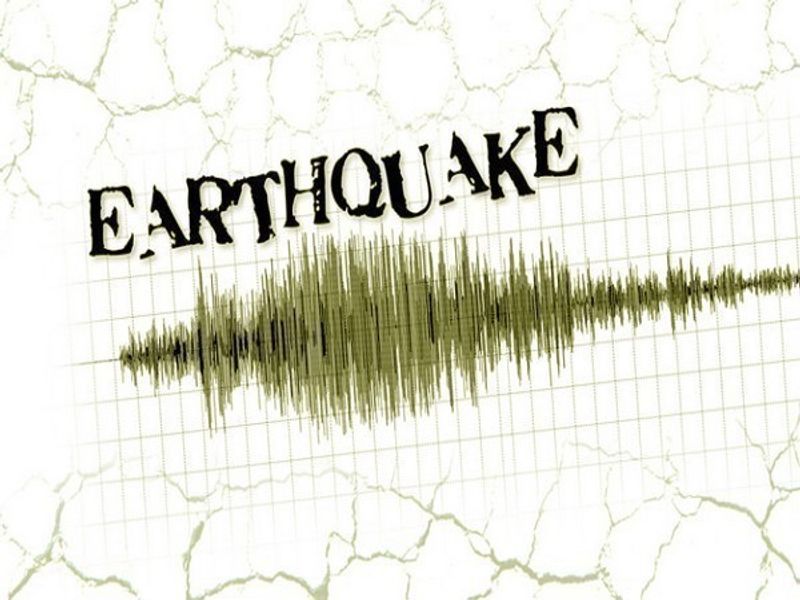 Image Source: The Tribune
Image Source: The Tribune
A powerful 5.8-magnitude undersea earthquake struck Indonesia’s Central Sulawesi province early Sunday morning, sending tremors across the region and injuring at least 29 people, including two critically. The quake, which occurred 15 kilometers north of Poso district, did not trigger a tsunami warning but left behind structural damage and widespread concern among residents.
Location and Timing
-
Epicenter: 15 km (9.3 miles) north of Poso district, Central Sulawesi
-
Time: Sunday morning, August 17, 2025
-
Depth: Shallow, increasing the likelihood of surface-level impact
-
Aftershocks: At least 15 recorded following the main quake
Casualties and Damage
Indonesia’s National Disaster Mitigation Agency (BNPB) confirmed that 29 people were injured, with two in critical condition. Most of the injured were attending a Sunday morning church service when the quake struck. Amateur footage circulating online shows significant structural damage to the church building, with collapsed walls and debris scattered across the premises.
The injured were rushed to the regional government hospital, and emergency response teams have been deployed to assess the full extent of the damage. Rapid assessments are ongoing, particularly in Poso and surrounding areas.
No Tsunami Threat
Despite the quake’s magnitude and proximity to the coast, Indonesia’s Meteorology, Climatology, and Geophysical Agency (BMKG) confirmed that there was no tsunami threat. This has provided some relief to residents, many of whom still recall the devastating 2018 tsunami that followed a magnitude 7.5 quake in the same region.
Indonesia’s Seismic Vulnerability
Indonesia, an archipelago of over 17,000 islands and home to more than 270 million people, sits on the Pacific “Ring of Fire”—a volatile zone of tectonic activity known for frequent earthquakes, volcanic eruptions, and tsunamis.
This latest quake is a stark reminder of the region’s vulnerability:
-
2018: A magnitude 7.5 quake and tsunami in Palu, Sulawesi, killed over 4,300 people.
-
2022: A magnitude 5.6 quake in West Java’s Cianjur city claimed at least 602 lives.
-
2004: A magnitude 9.1 quake off Aceh province triggered a tsunami that killed over 230,000 people across 12 countries.
Emergency Response and Preparedness
BNPB spokesperson Abdul Muhari stated that local disaster mitigation agencies are conducting rapid field assessments. Emergency shelters have been set up, and local authorities are urging residents to remain alert for aftershocks.
The government is also reviewing infrastructure resilience in quake-prone zones, particularly religious and public buildings that often serve as community gathering points.
Community Impact
The quake disrupted Sunday routines, with many residents reporting panic and confusion. Churches, schools, and markets were temporarily closed as safety inspections were carried out. Social media platforms have been flooded with images and videos showing cracked walls, fallen ceilings, and frightened congregants.
Local leaders have called for calm and solidarity, emphasizing the importance of community support in times of crisis.
Scientific Insight
According to the U.S. Geological Survey, the quake’s shallow depth and proximity to populated areas contributed to its impact. Seismologists note that while a 5.8 magnitude quake is considered moderate, its effects can be severe depending on local geology and infrastructure.
Indonesia’s BMKG continues to monitor seismic activity in the region and has advised residents to prepare for potential aftershocks.
Looking Ahead
This incident underscores the urgent need for:
-
Improved early warning systems
-
Earthquake-resistant infrastructure
-
Public education on disaster preparedness
Authorities are expected to release a detailed damage report in the coming days, and humanitarian aid may be mobilized depending on the evolving situation.
Sources: Associated Press via MSN, Yahoo News, 7NEWS Australia, Free Malaysia Today
Advertisement
Advertisement





